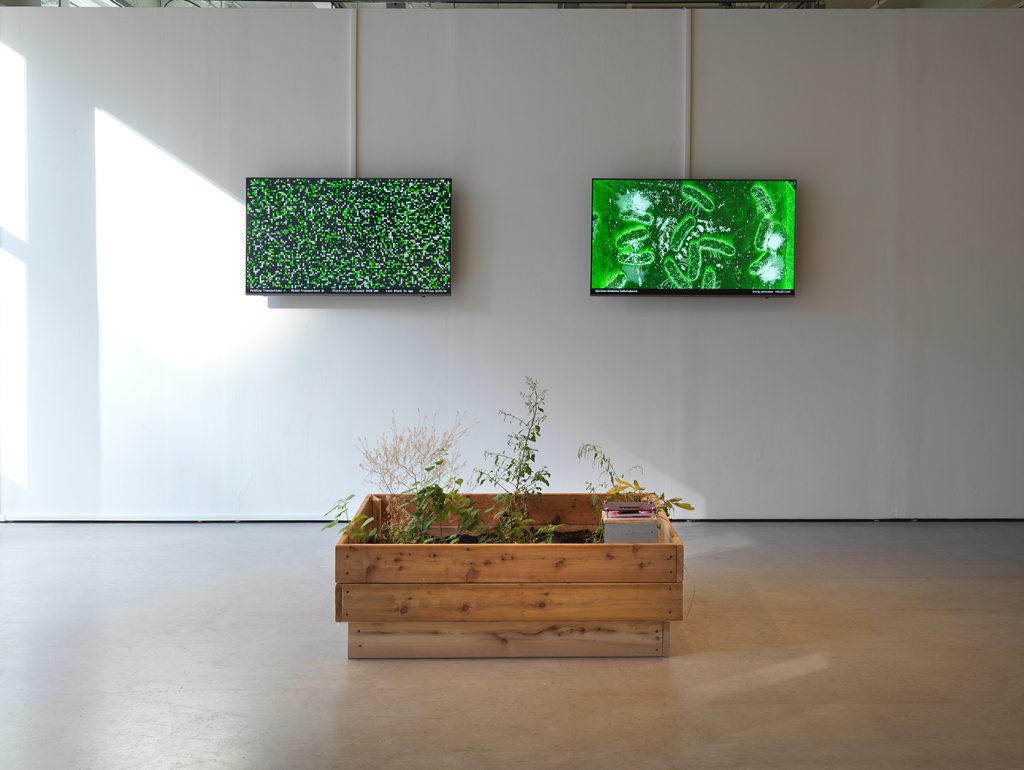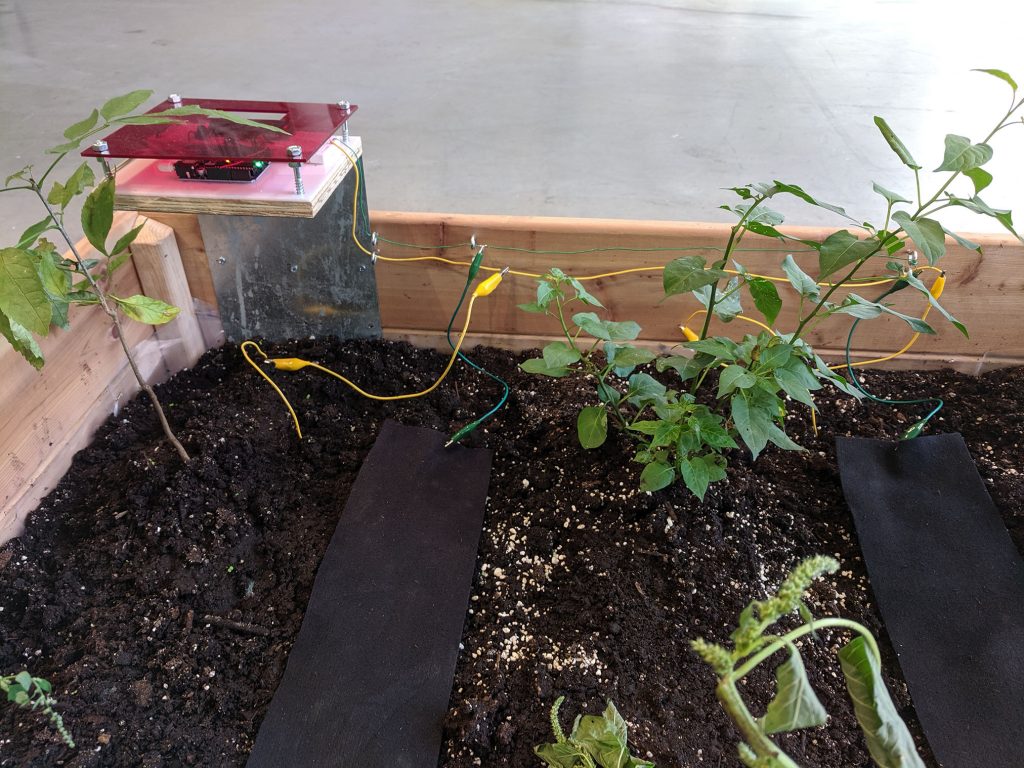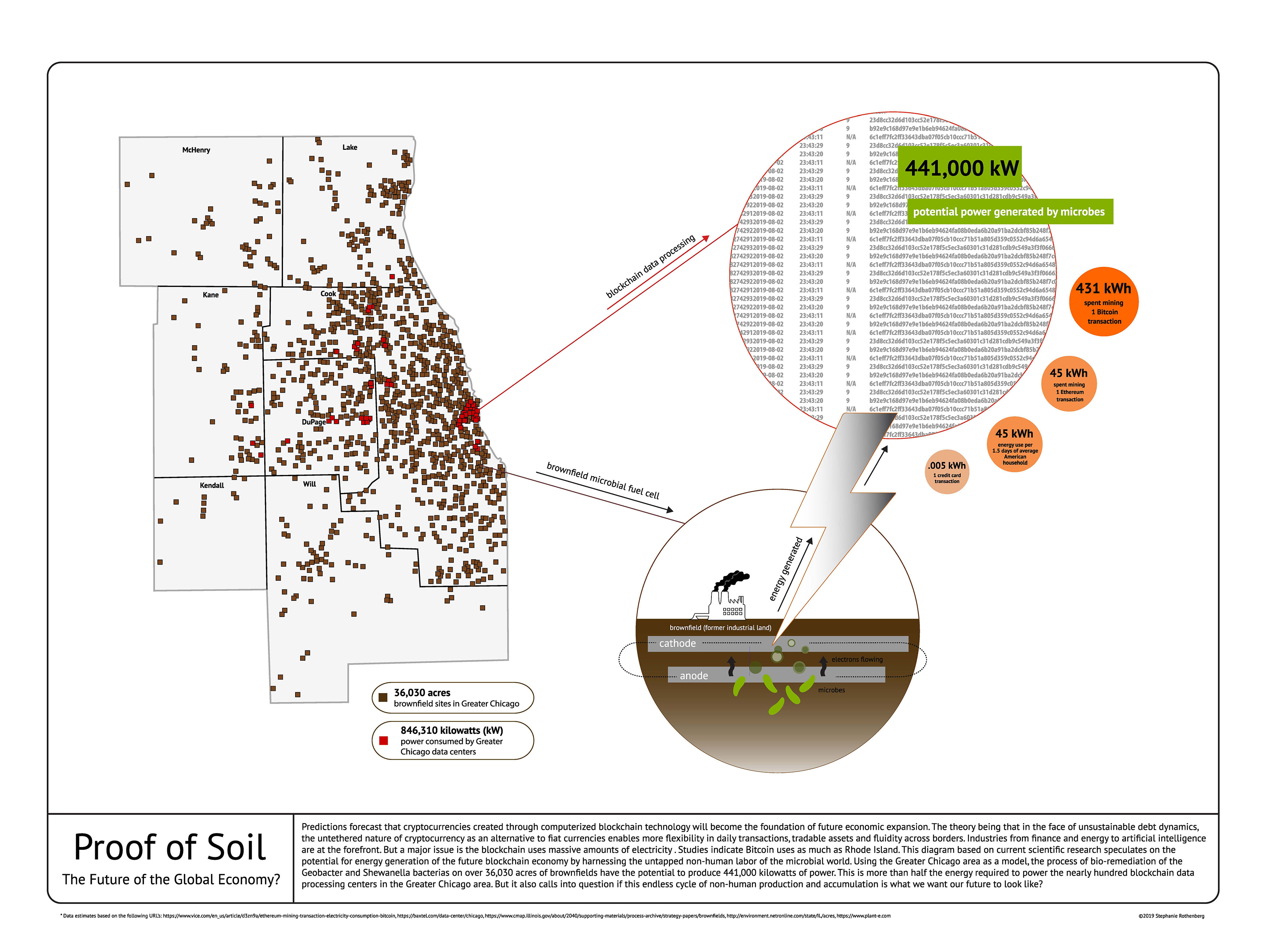Proof of Soil
How much energy is needed to power a future world economy running on the blockchain? And could this network run without human intervention?




 Photos image credit: School of the Art Institute Sullivan Galleries
Photos image credit: School of the Art Institute Sullivan Galleries

click to see larger image of infographic
Video documentation of installation.

View the Ethereum mining real time data visualization created by Amay Kataria here: https://www.amaykataria.com/Ethereum-Labor/
Recent Exhibitions
Goodbye Cruel World It’s Over
Weltkunstzimmer Art Center, Düsseldorf, DE
November 27 – February 2, 2020
Re: Working Labor Exhibition
School of the Art Institute of Chicago
Sullivan Galleries, School of the Art Institute of Chicago, Chicago, IL
September 20– November 27, 2019
“Proof of Soil” speculates on new forms of non-human labor that move between virtual and terrestrial networks to power a global financial economy that is in the not so distant future. Cryptocurrency, one of the fastest growing financial instruments in the world, becomes a lens to envision this anticipated moment. In a perpetual cycle of production and consumption, the excess from millions of machines laboring over algorithms is transformed through the labor of microscopic organisms which metabolize waste back into the energy critical to sustaining this massive system.
Over the past ten years since the birth of Bitcoin in 2009, cryptocurrency has been accelerating at a rapid pace as both a form of exchange and a financial investment. Even with its volatile fluctuations, its user base doubled in 2018 from 18 to 35 million users and its market worth rising to approximately $270 billion. Although skeptics are quick to predict the crypto mania bubble will eventually burst, as we move further into a cashless society the platform continues to grow.
In addition to cryptocurrency’s volatility, one of the utmost concerns is its energy usage. Cryptocurrency is created through distributed networks – millions of computers running code to collectively solve complex math problems that verify transactions. “Proof of Work,” an algorithmic set of rules each computer’s code must follow to communicate, is crypto’s crux of existence. In the computation process known as “mining,” the first “miner” to solve the problem generates a block of data based on previous data forming a “blockchain” that prevents system hacking.
Computer server farms are the new non-human digital sweatshop to perform this work and are emerging around the world, especially where electricity is cheap. As you can imagine, running all the billions of computers requires massive amounts of power. One recent report stated that Bitcoin has an energy footprint the size of Rhode Island.
So how do we power this inevitable, energy hogging growing economy when we’re already in an environmental energy crisis?
Living beneath the soil is a terrestrial world of microorganisms that scientists are discovering can generate electricity. This “microbial machine” comprised of bacteria such as Geobactor and Shewanella feed off carbon-based particles, oil-based pollutants, metal and radioactive materials that have collected in the soil from pollution. This process of microbial bioremediation actually produces an electrical current as the microbes transfer electrons. If harnessed strategically power can be generated – so much so that NASA researchers are even considering microbial power for future space missions.
“Proof of Soil” imagines a new system in which energy is harvested from the accumulated waste of our toxic landscapes to keep the network running. A new set of rules and form of communication emerges not only between the artificial intelligence of the machine algorithm but with the sentient world of the non-human organism. In the artwork, a physical prototype representing a plot of land networked to the blockchain reveals both the promise of alternative energy and the challenges it confronts while questioning the future of human labor.
Installation details:
A physical model of microbial fuel cell in contaminated “brownfield” soil that can generate up to 5 watts of electricity – enough to charge a cell phone or router. The small LCD screen shows how much energy is generated and what it can charge.
The infographic poster shows a map of the greater Chicago area with red dots indicating data processing centers and brown dots indicating brownfield/contaminated soil. Chicago is the 3rd largest data processing center in the U.S. If the microbial fuel cells were used throughout the over 36,000 acres of brownfields that could potentially charge half the amount of electricity needed to power Chicago’s major data processing centers. Many of these centers are colocation providers for blockchain mining.
The data visualization created by Amay Kataria (https://www.amaykataria.com) shows real time mining of Ethereum. The green dots show the actual algorithms being processed to create the cryptocurrency. The white dots show a completed transaction. The other metrics show electricity required to perform the transactions.
The video is a simulation of the Geobactor bacteria in a microbial fuel cell that is metabolizing metals in contaminated soil.
Thanks to Dann Discligio for his horticulture expertise in the Sullivan Gallery exhibition.
